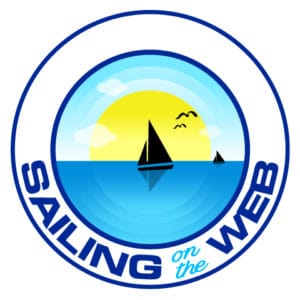There are multiple ways to learn how to sail. You can choose to just jump in a boat with a friend and try to learn from experience and see how that turns out for you. We would caution against this however as this can be dangerous.
If you are the academic type, you can decide to sign up for a formal course at a sailing school and learn with the books and practical sessions. If you are the adventurous type, you can buy or borrow a small sailboat and by following instructions here, learn how to use it.
Like most things in modern times, learning how to sail can be easy, if you put the work in. But learning to master the art of sailing can take a lifetime. Sailing in itself is a mix of specific knowledge, honed skills and a gut instinct for the wind and the feel of the boat with the water cutting beneath your bow.
However no matter what method of learning you choose, it helps to understand the vessel you are sailing. You should know what is involved in sailing first before you’re out on the water, where suddenly you might get into trouble.
Staying Above The Water
It is important that you understand that sailing involves both specific knowledge and skills. In this article, we provide the first steps into the world of sailing. We will wet your toes and give you the direction you need to understand the basics.
Basic Sailing Terms
To get into sailing, you have to understand that there are words that are used to talk about the sailboat and the skills used to sail. You should start here with a review of basic sailing terms. You do not have to worry about memorizing everything as many of these terms and concepts will become clearer as you read on about how to do it.
Sailing has its own glossary of terms. It has its own unique vocabulary and you’ll need to learn that. You’ll hear strange words and expressions.
Familiarize yourself with them before ever setting foot on a boat and you’ll be ahead of the game. This is one of the most important jargon to learn. Before you go on the boat, it’s helpful to know the words used in different parts of the boat.
Take a Course Online
Now that you are ready to learn more about boats and sailing generally, you can start learning here. You are on the right track by coming here and you will find the information you need here.
Boat Makeup
Moving on, you should learn the unique parts of a boat, so you’ll know what to touch, look at or do when the instructor in your first class gives you a directive.
Boat parts have unique names. Once you learn that there are no ropes on a boat (only “lines”), you’ll sound like a pro too and nothing feels like sounding like a pro.
Even if you have an instructor, he or she won’t say “Grab that rope over there and pull it,” but instead will say “Haul in the jib sheet!” Review the basic boat terms. you’ll need to know so you will not get lost or confused. If you know the language of the parts, then you will know your way around the boat and you will know how to navigate.
Rig the Boat
Now that you have taken an online course and you know fully well what the parts of the boats are called, time to go sailing right? Wait, hold it a minute- you have to rig the boat first by putting on sails and making other preparations.
To put it simply, rigging the boat means working the different ropes and cable to make sure that your boat is able to sail. This is a more advanced article and will be covered later.
Review Basic Sailing Techniques
Now you have the boat ready- so what do you do now to make it go? Manage the sails to go in the direction you want by learning basic sailing techniques.
You will discover that sailing in a set direction is reasonably easy, but eventually, you’ll have to change direction. That often involves tacking and gybing. Take a moment to learn what’s involved in these critical maneuvers.
Emergency Action
Asides from learning to sail a boat, it is essential that you know how to protect yourself when trouble comes. Small sailboats often tip over if the wind is gusting. Be prepared and carefully see how to recover from a capsize.
After knowing how to sail and how to get the boat under control. Learn how to go faster, dock or anchor the boat and use some of the equipment you may not have handled before now. Also take a look at some additional sailing skills like knot tying. Practice how to tie knots.
Knots are important on a sailboat and you will need to learn at least some basic sailing knots to sail at all.
You should also learn to sail safely. Once you have learned all that have been specified above, you are good to go really. However, it’s good to remember that water is a dangerous place. You need to understand how to stay safe while on the water. Staying safe makes it easier to keep having fun out there
Final Notes
In conclusion, one essential thing is this: you will need to know how to interact with other boat traffic on the water. Remember that you will not have the whole sea to yourself. Understanding who is under obligation to move will help you avoid a collision.
Those with the right of way are called the “stand-on” vessel while the others are the “give way” vessel. The rules are based on the type of boat (sail, power or human propelled), the location of the interaction (restricted channels or open water) and the activity the boats are involved in at the point of potential encounter (like sailing, fishing or towing). These are not things that you will learn in a day but they are some of the things that you should pay attention to in your learning period and as you begin sailing on your own.
Nevertheless, regardless of the rules, the objective is to avoid a collision at all costs so you should never insist on your rights regardless of the circumstances. It is better to be safe than to be right.
Conclusion
Sailing is an adventurous skill as it opens you up to the world and presents before you a whole new experience like none that you have ever been through before. However, the process comes before the gain and although many people regard sailing as difficult and tense, with the guidelines above you can be in a pro in a while if you are given to regular trainings and practices.
Sailing can be interesting. It is meant to be. Use the guidelines above to learn and make sure you enjoy your learning process. Be happy in the journey and sail all you want.

